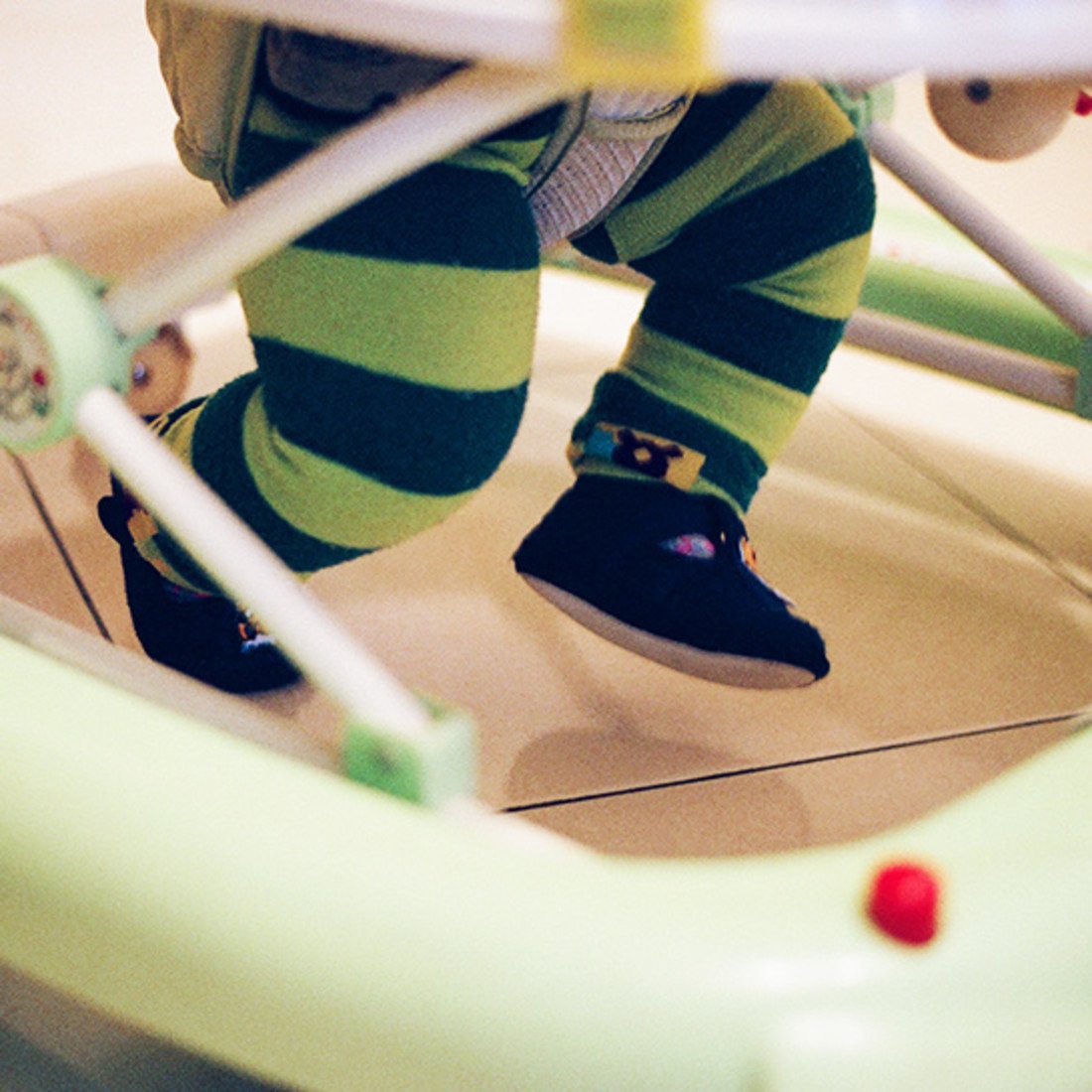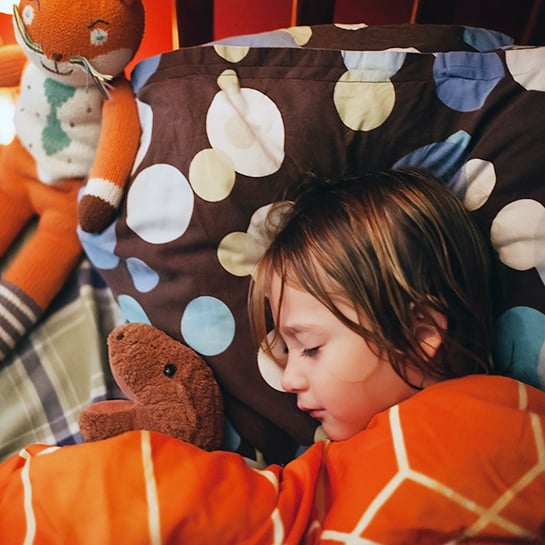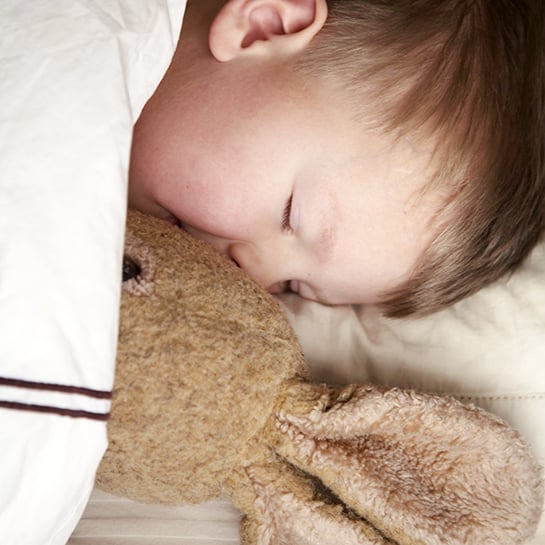
Establish a Plan

The first step to having a bedtime ritual is to choose a routine that you can actually do, every night. This can include bath time, a massage, story and song, or any combination of elements says Tamiko Kelly, Child Sleep Expert at Sleep Well Wake Happy. Tamiko adds that parents who are willing to establish bedtime rituals tend to have a much easier time getting their kids to sleep. “They are also able to achieve sleep success within a few days verse months (or years) compared to those who don't,” she says.
Image via Klaus Vedfelt/Getty Images
Wiggle It Out

Before you set in the calming mood of your bedtime routine, sometimes it helps to let your toddler get out any pent-up energy out of his system first. As long as you follow-up any rowdy play with something calmer, this can be the first step toward bedtime.
Image via D.Jiang/Getty Images
Start Earlier

Toddlers need anywhere between 12-15 hours of sleep a day. While it can be tempting to keep your child up until she passes out on the couch, an earlier bedtime will provide her with the opportunity to get the full amount of rest she needs, not to mention, help her establish good sleep habits.
Image via Adriana Varela/Getty Images
Keep It Short

A long, drawn out bedtime ritual is not necessary, especially if your child is consistently yawning halfway through the steps. A short routine, with a handful of steps that’s easy for you and your child to remember, can also work.
Image via Rune Johansen/Getty Images
Set the Mood

Begin setting the calming mood for your bedtime ritual by turning down the lights, avoiding loud music or rowdy behavior. You may enjoy giving your child a massage with lavender scented oils or lotions. The lavender scent, according to University of Miami School of Medicine scientist Tiffany Field, helps promote a relaxed state which helps set the stage for sleep.
Image via Martine Doucet/Getty Images
Unplug Devices

Limiting your child’s exposure to electronic screens can promote better sleep according to the Journal of the American Medical Association. Dr. Egambaram Senthivel, a University of Louisville pediatric sleep specialist adds that having devices on at night can cause kids to get more excited and have a more difficult time falling asleep. “About an hour or two before bedtime, the brain releases melatonin that helps you fall asleep. When you are exposed to the light, it inhibits the release of melatonin and can prevent you from falling back asleep.”
Image via Janeil S/Getty Images
Keep It Cool

Our body temperature dips in order for us to fall asleep, so don’t overdress your baby. A single layer of long sleeves and long pants will do just fine. Shoot for a room temperature around 65 to 70 degrees Fahrenheit.
Image via jurgita photography/Getty Images
Anticipate Requests

Many toddlers and preschoolers try to make last-minute requests at bedtime to prolong the routine. Knowing your child and what he may request (it may be a cup of water or a special song), be prepared with as much as you can beforehand so that you can stick to the schedule.
Image via Michelle Gibson/Getty Images
Add Security

Having a familiar blanket, stuffed animal or other object nearby can help give your child that extra sense of calm and comfort as they doze off to sleep. If your child is particularly nervous about being in her room alone, this item can help ease her fears. Adding a night-light in the room for your child can help alleviate fears of the dark.
Image via Rebekah Logan/Getty Images
Stay Consistent

Once you’ve established your nighttime ritual, don't deviate from the routine. “The best tip I can give parents is to remain consistent,” Kelly says. “No matter where you go, you can take your routine, implement it and your child will fall right to sleep. That's the power of consistency.”
Image via KidStock/Getty Images






